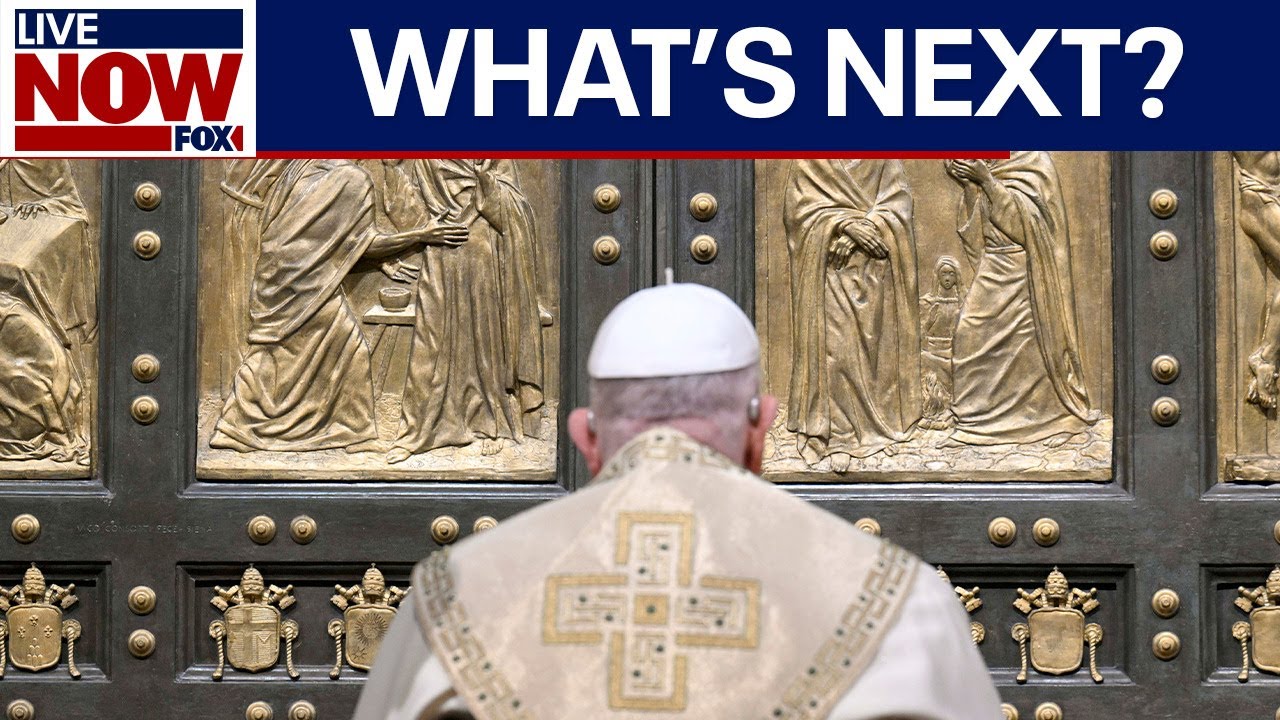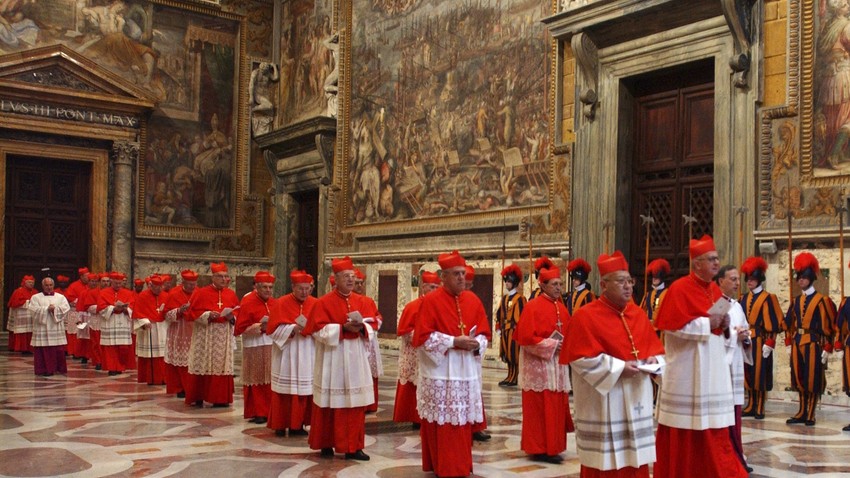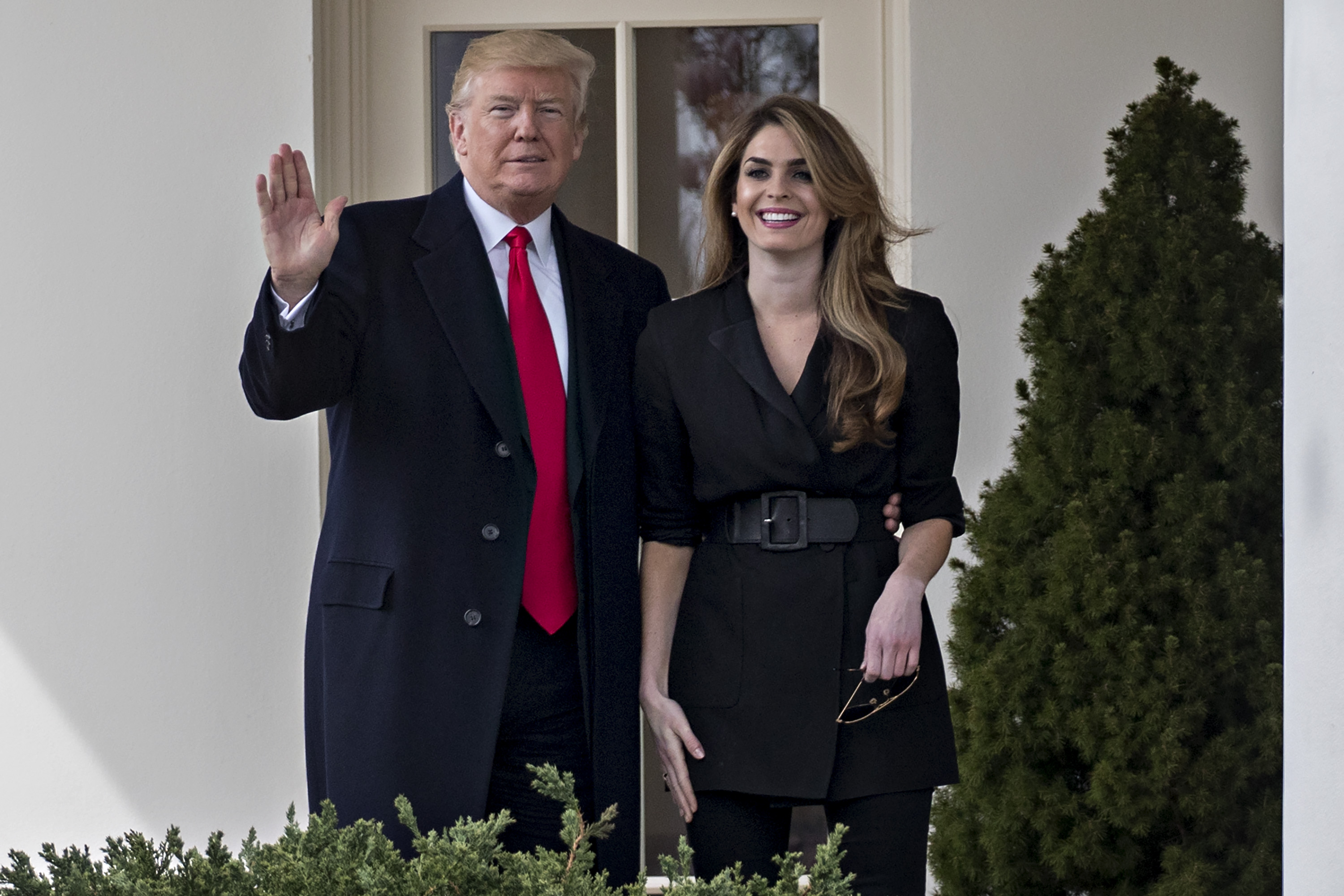The Papal Conclave Explained: A Step-by-Step Guide

Table of Contents
The Prerequisites for a Papal Conclave
The Papal Conclave, the process of electing a new Pope, is triggered by a specific event: the vacancy of the Papal See.
The Vacancy of the See
The death or resignation of the reigning Pope creates the sede vacante (vacant see), officially declaring the papacy empty. This period, between the Pope's departure and the election of his successor, is a time of transition.
- Official Declaration: The death or resignation is formally announced, initiating the process.
- The Cardinal Camerlengo: During the sede vacante, the Cardinal Camerlengo, a kind of temporary administrator, manages the Vatican City State's affairs.
- The Consistory of Cardinals: A meeting of cardinals is convened to prepare for the conclave. Key logistical and procedural aspects of the Papal Election are finalized.
The Conclave's Participants: Cardinal Electors
Only eligible cardinals can participate in the Papal Election. This significantly impacts the selection process.
- Cardinal Electors: Only cardinals under the age of 80 are eligible to vote in the conclave. They are the cardinal electors.
- The Role of the Cardinal Dean: The Cardinal Dean, typically the oldest cardinal, presides over many aspects of the pre-conclave proceedings and plays a significant role in guiding the process.
- Exclusion Rules: While rare, specific circumstances could lead to a cardinal's exclusion, such as being involved in a scandal or facing canonical sanctions.
The Preparations for the Papal Conclave
Before the voting begins, significant preparations ensure the secrecy and solemnity of the process.
Seclusion and Security: The Conclave's Fortress
The conclave is held in strict seclusion, typically within the Sistine Chapel in the Vatican. Security is paramount.
- Location: The Sistine Chapel, traditionally the setting for Papal Conclaves, provides a secure and symbolic location.
- Communication Restrictions: Cell phones, internet access, and external communication are strictly prohibited to maintain secrecy and focus on prayer and deliberation.
- Security Personnel: The Vatican employs a significant security detail to ensure the safety and seclusion of the cardinals during the conclave.
The Oath of Secrecy: A Sacred Promise
Before the conclave begins, every participant takes a solemn oath of secrecy. This is crucial for maintaining the integrity of the election.
- Importance of Secrecy: Maintaining absolute secrecy is vital to ensure that the voting process remains free from external influence or pressure.
- Consequences of Breaches: Breaking the oath carries significant canonical penalties, underscoring the seriousness of the commitment to secrecy.
- Historical Examples: Though rare, historical examples of breaches have highlighted the importance of the oath and its role in maintaining the sanctity of the process.
The Process of Papal Election
The Papal Election itself is a structured, multi-stage process culminating in the selection of the new Pope.
The Scrutiny: The Secret Ballot
The election process involves multiple rounds of voting, conducted through a secret ballot.
- Secret Ballot: Each cardinal casts a vote in secret to ensure impartiality and prevent undue influence.
- Counting Process: The ballots are meticulously counted by specially appointed officials, ensuring accuracy and transparency within the secrecy.
- The Fumata: White smoke signifies the election of a new Pope, while black smoke indicates that a majority has not yet been reached. This visual cue is a tradition that adds to the dramatic nature of the event.
Reaching a Two-Thirds Majority: The Threshold for Election
A two-thirds majority is required for the election to be valid. This ensures broad support for the new leader.
- Multiple Ballots: Multiple rounds of voting may be necessary before a candidate secures the required two-thirds majority.
- Process if No Majority: If no candidate reaches the required majority, the process continues until a consensus is reached.
- Implications of Multiple Ballots: Extended deliberations might indicate difficulty in reaching a consensus amongst the cardinal electors.
The Announcement of the New Pope: Habemus Papam!
Once a two-thirds majority is reached, the election of the new Pope is announced publicly.
- Habemus Papam!: The iconic phrase "Habemus Papam!" ("We have a Pope!") is proclaimed from the balcony of St. Peter's Basilica, signifying the successful conclusion of the conclave.
- The New Pope's First Appearance: The newly elected Pope then appears on the balcony to address the crowds gathered in St. Peter's Square.
- Significance of the Announcement: The announcement is a moment of great significance for the Catholic Church and the world, marking a new chapter in the Papacy.
Post-Conclave Procedures
Following the election, various procedures and ceremonies formally install the new Pope.
The Pope's Inauguration: A Formal Installation
The inauguration of the new Pope is a formal ceremony marking his official ascension to the papacy.
- Papal Coronation (Historical Context): Historically, the Pope's inauguration included a coronation ceremony, though this has been simplified in recent times.
- The Papal Mass: A special papal Mass is celebrated, signifying the commencement of the new Pope's pontificate.
- The New Pope's First Official Acts: The new Pope typically undertakes various official acts shortly after his inauguration, setting the tone for his papacy.
Conclusion:
The Papal Conclave, a complex and historically significant process, remains a vital part of the Catholic Church. Understanding its intricate steps, from the initial vacancy to the announcement of the new Pope, provides valuable insight into the leadership selection within this global institution. By delving into the details of the Papal Conclave, we gain a deeper appreciation for the weight and significance of this unique election. For further information and a deeper understanding of this fascinating process, explore more resources on the history and evolution of the Papal Conclave. Learn more about the Papal Conclave today!

Featured Posts
-
 Check The Rsmssb Exam Calendar 2025 26 Key Dates And Updates
May 07, 2025
Check The Rsmssb Exam Calendar 2025 26 Key Dates And Updates
May 07, 2025 -
 Konklawe W Watykanie Tajemnice Kardynalow Ujawnione
May 07, 2025
Konklawe W Watykanie Tajemnice Kardynalow Ujawnione
May 07, 2025 -
 Nba Playoffs Can The Timberwolves Make A Run
May 07, 2025
Nba Playoffs Can The Timberwolves Make A Run
May 07, 2025 -
 Hollywoods Hope Trump Moviemaking And The Unexpected Reality
May 07, 2025
Hollywoods Hope Trump Moviemaking And The Unexpected Reality
May 07, 2025 -
 Nay Golemite Khitove Na Ed Shiyrn Vdkhnoveni Ot Riana
May 07, 2025
Nay Golemite Khitove Na Ed Shiyrn Vdkhnoveni Ot Riana
May 07, 2025
